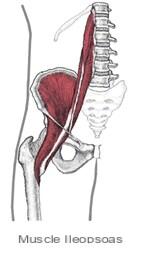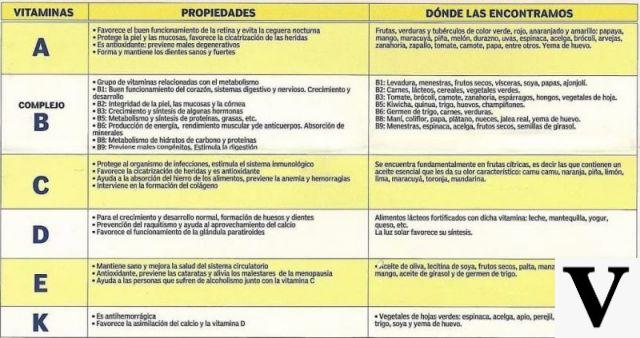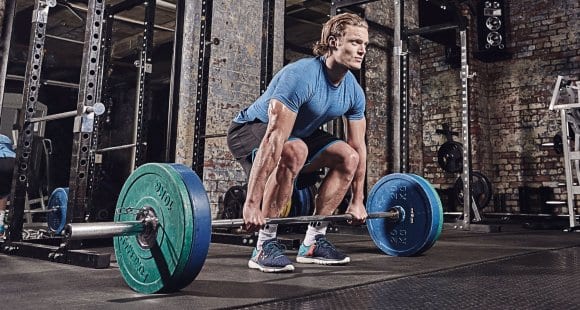Generally, members of gyms with back problems are advised to sit down while performing the exercises, as it is considered safer. Do we know how to give a reason for this all too common advice? Boooooooo ... or "it's just like that". It is precisely for the occurrence of such situations that we should speak only from acquired science and not from hearsay or to follow the maxim: “so do everyone”.
In this sector the theories based on empirical experiences are many, but science is one and unequivocal!
So let's see what science tells us
The resistance of the spine is given by the number of its curves squared + 1:
R = N² + 1
The vertebral column seen in the sagittal (lateral) plane has 3 curves (two lordoses: lumbar and cervical spine, and one kyphosis: dorsal spine).
The presence of these three curves guarantees the maximum yield (underlying formula 1), while the reduction or disappearance of one of them induces (underlying formula 2) a drastic drop in resistance.
Formula n. 1 R = 3² + 1 = 100%
Formula n.2 R = 2² + 1 = 50%
What happens when we sit down?
The terminal part of the vertebral column (sacrum) is anatomically joined to the pelvis and is therefore bound to its every movement.
When we sit down, we induce, through the flexion of the thighs on the pelvis, a retroversion of the latter, with the consequent reduction of lumbar lordosis. As a result, the curves of the spine go from 3 to 2, reducing, as we have seen, the resistance of the entire spine. This situation is absolutely physiological, but imagine it with an overhead load (eg slow with a barbell). In this case the resistance of the back is reduced (because seated) and at the same time the compression increases significantly (load over the head).
In light of the above, are you still sure that sitting exercises are safer than standing exercises?
Not to mention when it is even recommended to raise the legs on a step, thus bringing the lumbar spine from a lordosis to a kyphosis (the maximum of anti physiology).
After these considerations, as an iron lover, I ask you: the famous Military press (slow with standing barbell), which for years has been downgraded to an exaggeratedly harmful exercise for the back, perhaps it is not as dangerous as they say, or at least , is it less harmful than the classic slow sitting?
Then?
From today, everyone to do standing exercises?
It depends!
After years of study and practice in this sector, I realized that there is no fixed rule, but there is the person, on whom we have to embroider a tailored suit, breaking out of clichés and rigorously applying science.
For this reason, we could divide the "average" people attending a fitness center into two categories: hypo and hyperlordotic subjects.
Hypo - lordotic subjects
 Hypolordotic subjects have a reduced lumbar curve; consequently, the resistance of the entire spinal column is also reduced. This means that all hypolordotic people who want to approach physical culture, or who have been doing it for some time, would be safer if they performed exercises in a standing position. This security is given by the "pull" that the iliopsoas muscle exerts on the lumbar vertebrae.
Hypolordotic subjects have a reduced lumbar curve; consequently, the resistance of the entire spinal column is also reduced. This means that all hypolordotic people who want to approach physical culture, or who have been doing it for some time, would be safer if they performed exercises in a standing position. This security is given by the "pull" that the iliopsoas muscle exerts on the lumbar vertebrae.
This muscle originates from the bodies of the 12th thoracic vertebrae and the lumbar vertebrae L1-L5, and then inserts itself on the lesser trochanter of the femur (in our world, anatomy is everything). Being a very powerful flexor, when we are standing the iliopsoas, taking hold on the femur, pulls the lumbar vertebrae, imposing on them a correct position of normo - lordosis.
Therefore, we should prefer standing exercises to work, for example, the shoulders and arms.
Even squats and lunges, with some tricks, are excellent and are preferable to normal leg presses, which accentuate the problem when seated, often causing back pain.
Even the much loved abdomen cannot be trained too much by this category of subjects, as being anatomically joined to the xiphoid process (sternum) and the pubic symphysis (pelvis), its continuous or excessive contraction would affect the lumbar spine, further reducing it lordosis.
Hyper-lordotic subjects
Hyperlordotic subjects are the exact opposite of the previously described group, having an accentuated lumbar curve. Therefore, keeping in mind the above description, exercises in a standing position should be avoided, as they would further increase the lumbar curve.
Then, the various leg presses are to be preferred over squats or lunges, as are recommended exercises from sitting for shoulders, arms, etc.
Additional attention should be placed on the leg stop of the lat machine. The pressure exerted by the legs on this padding, in fact, indirectly induces a contraction of the iliopsoas which, as we have seen, increases lumbar lordosis. Hence, hyper-lordotic subjects should remove that padding.
In this category, abdominal work can be done in a more than calm way, but always without exaggerating, as overtraining a muscle does not bring aesthetic benefits, but only postural alterations.
Good training everyone!
References
Donskoy - Zatziorskij KL Biomeccanica. Ed. SSS, Roma 1983
Bogdanov L., Iavanov P. Biomechanics of physical exercises. Ed. SSS, Rome 1989
Guyton A. Treatise on Medical Physiology. Piccin Editore, Padua, 1995
Balboni GC Human Anatomy. EdiErmes, Milan, 1998
McMinn S., AAVV Functional and clinical anatomy. Ed. UTET, Milan, 2001


























